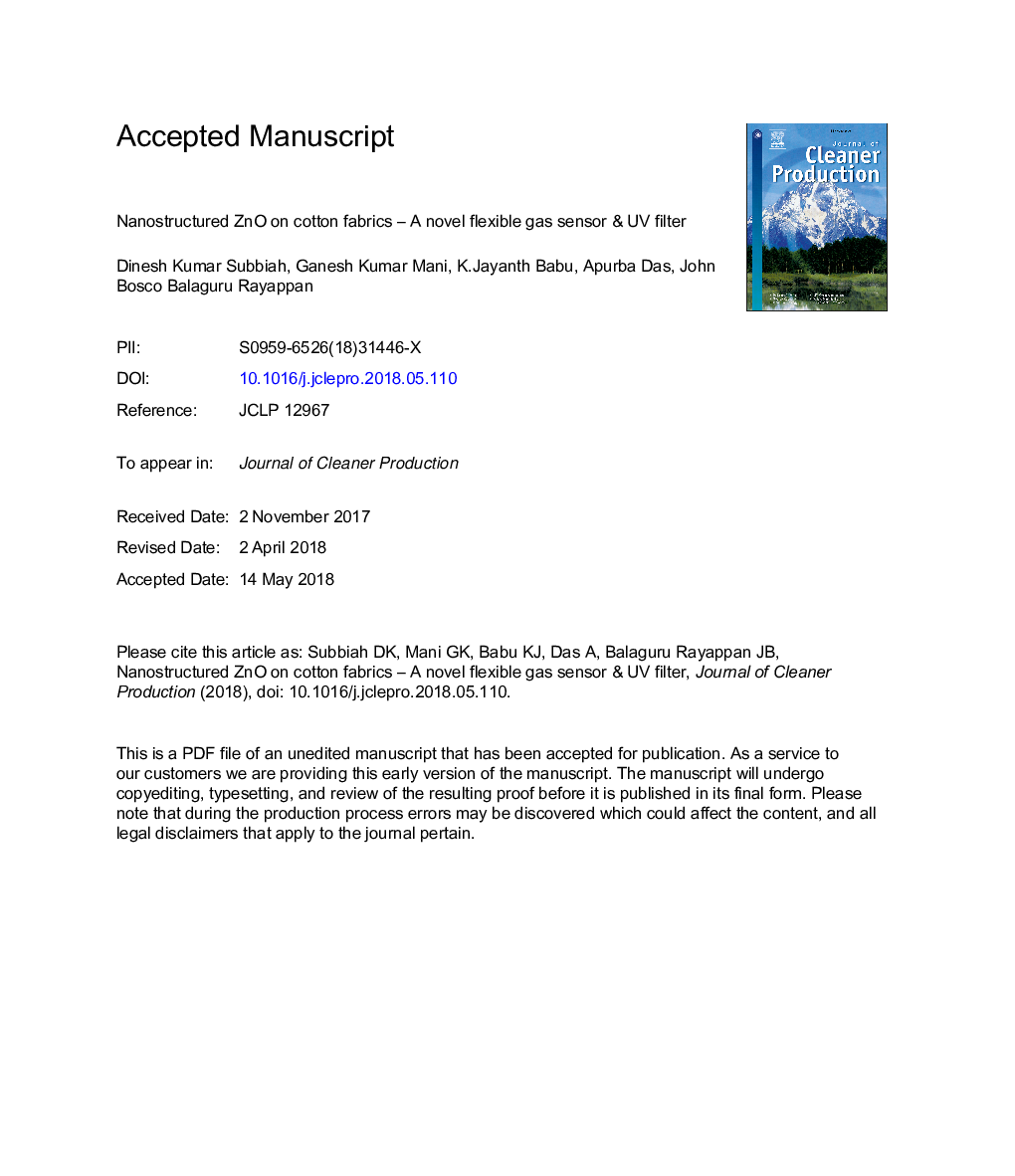| Article ID | Journal | Published Year | Pages | File Type |
|---|---|---|---|---|
| 8094250 | Journal of Cleaner Production | 2018 | 31 Pages |
Abstract
The surge in skin cancer cases across the globe has forced the scientific community to develop solutions to protect humans against the ill effects of ultraviolet (UV) radiation. Nowadays, functionalized cotton textiles are employed to protect humans against UV radiation. In this context, nanostructured ZnO modified cotton fabrics towards the enhancement of ultraviolet protection factor (UPF) as well as to develop wearable gas sensors have been developed. The surface of carbon cellulosic fabric was modified by sol-gel and sputter seed layer-coated sol-gel techniques. ZnO grown fabrics were characterized using X-ray Diffractometer (XRD), Field Emission Scanning Electron Microscope (FE-SEM), Thermogravimetric Analysis (TGA), X-ray Photoelectron Spectrometer (XPS) and Fourier Transform Infrared Spectrometer (FTIR). Subsequently, UV-blocking and gas sensing properties of the modified textile samples were investigated. The seed layer initiated sol-gel modified cotton fabric showed a maximum UV protection factor (UPF) of 378. Also, room temperature gas-sensing performance of the functionalized cotton fabric towards volatile organic compounds such as acetaldehyde, ammonia and ethanol vapours was investigated.
Related Topics
Physical Sciences and Engineering
Energy
Renewable Energy, Sustainability and the Environment
Authors
Dinesh Kumar Subbiah, Ganesh Kumar Mani, K. Jayanth Babu, Apurba Das, John Bosco Balaguru Rayappan,
